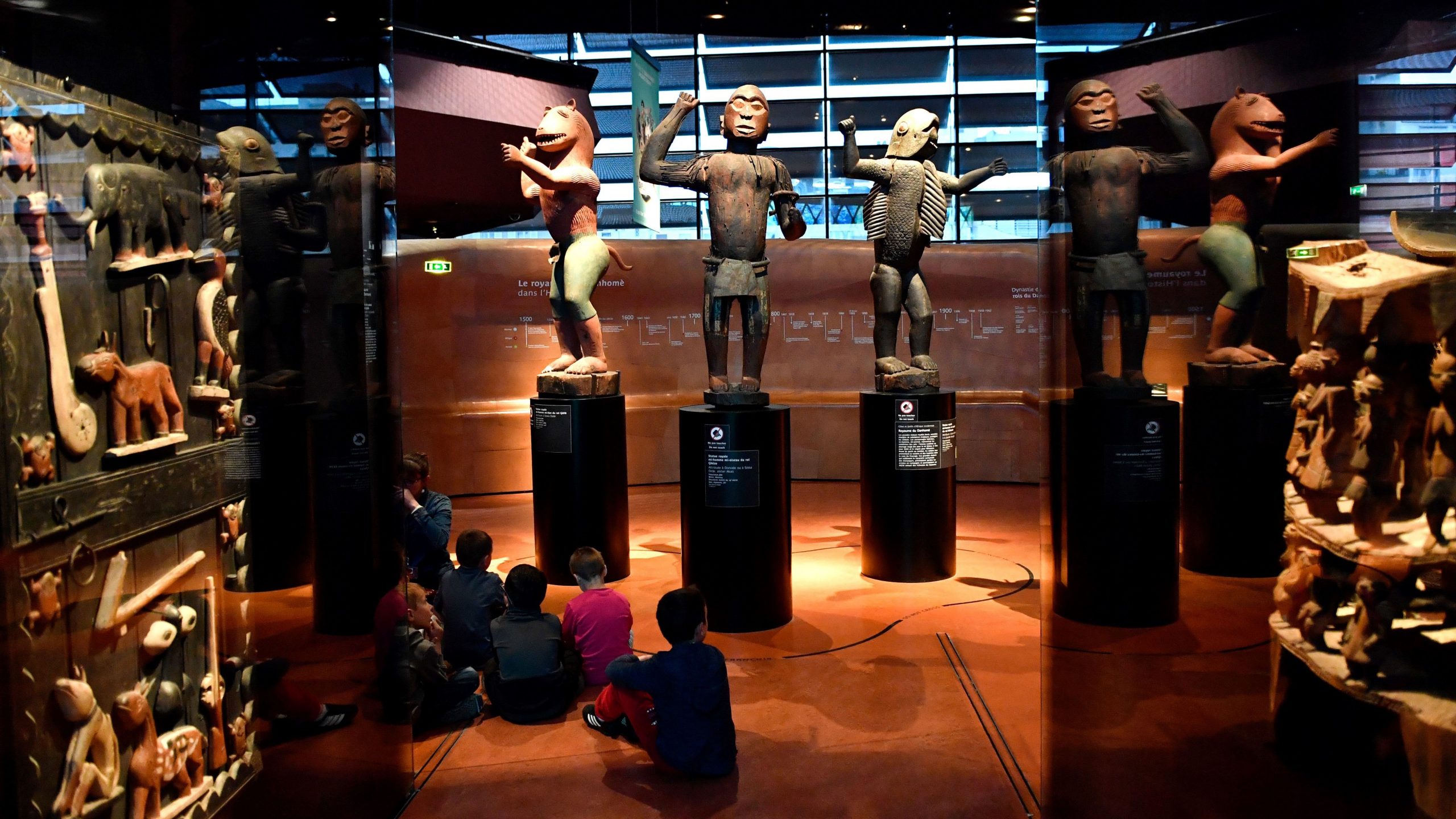
How African Art Brings Colour To London Home: An Art Collectors Interview
Isata Funma sees me eyeing up the beaded West African head in the double living room of her arctic London domestic home and I hesitate and look away. The upright armchair not only looks handy and embellished with vibrant chaplet, it also appears backbreakingly melancholy.
Indeed I was skeptical of it and so I continue to be seated as Isata explains that her interest sprouted from being just “an activity of accepting contemporary African pieces as decoration in my home and became deepened by the inability to discover them”. This made her decide to import pieces from her native country in sierra Leone. She now designs fabrics, and her items includes bright geometric cushions, lampshades and ceramics, which are offered for sale in Dar Leone, her bazaar shop in Islington, arctic London.
A stool holds its personal ground beside the throne, a brace of carved figures with the aid of the late Makonde artisan George Lilanga, from Tanzania, analytically cut from behind.
She and her husband Philipp, a broker in start-ups, have daughters who are coming of age. “I feel them once I examine these,” she smiles. “Their faces are so evocative!”
The stool is covered in a single piece of one of her most recent fabrics, Naima-the-Teals which is a mixture of blues and gold. It is an adventuresome positioning beside the throne’s purples and reds; if it clashes, then so be it. “I don’t do matchy-matchy,” says gleeful Isata, who moved from Freetown to Maryland in America, as a young lady.
After studying law, she shifted her attention to the assortment and appreciation of modern art, first European and now African.
Underneath a portrait of Israeli artist Yehudit Sasportas, three of Isata’s cushions brighten the ancient asset couch from B&B Italia.
“I’ve rescued lots of chums’ gray sofas that I come in contact with,” says Isata, whose materials, which are printed in Yorkshire, are expressed in the abundance of Sierra Leone country unique fabric, also called kpokpo. It’s united in strips on looms after which is stitched collectively to form a beautiful piece. “It’s a very typical example of abundant Leonean art and beauty. I like the idea of celebrating that.”
The academic double lounge is divided by glazed bi-folding doors. From the first part, which hosts bespoke walnut shelvings decorated by interior architect Ramses Frederickx, to a condo which hosts Dutch vintage books inherited by Philipp. “It’s a mini academic library in modern surroundings,” says Isata.
The brace lived in Berlin for many years, the place where they started collecting modern European art, before relocating to London.
Their international culture is far and wide and can be seen in evidence as you stroll into the tiled hallway of their Victorian semi-indifferent domestic wing, an inn sign saying resort Yalta welcomes you, designed by the backward Turkish artisan Hüseyin Bahri Alptekin.
“we love that it reminds us of our campaign to quite a lot of countries,” says Isata, “and the bond of the excitement of the neon gentle and the blah reality of the place within the sign.”
“I am always completely happy to decide on up pieces from the past, old glass vases, doilies, frames for photographs or paintings.”
Attention now moves to Bench, an original-plan kitchen and residing space overlooking the garden. “It changed into intensely acclimated place throughout the lockdown by the girls – there we made lots of banana bread, and BBQs in the garden. We all assemble right here in the evenings.”
Accents of green, in everything from flowers to fabric, deliver cohesion to an area crammed with extra artwork and curiosity, and additionally serve with the garden, which backs on to Hampstead Heath. The impressive Dozen, a painting of adhesive-forged African masks in basic colours by talented Serbian artists Djordje Ozbolt, sits above an epic-eco-friendly velvet sofa, a Bamileke beaded stool from Cameroon beside it.
In addition to the exquisitely decorated space were eco-friendly-velvet chairs and balloon-like chaplet lights, from Rothschild & Bickers, placed over a marble-topped dining table further accentuated by a neat and abundantly designed drinks trolley, sitting underneath two egg-shaped- artworks, enlivened the atmosphere on occasions such as birthday celebrations held in the room.
The works of Ivorian painter Aboudia over the hearth is so unique that Isata gushed over it saying “I really like a bar barrow,” “and a mixture of kitsch. It brings a sense of freedom to architecture.” It’s a reminder, she says, that “we don’t deserve to grasp ourselves so earnestly.”

